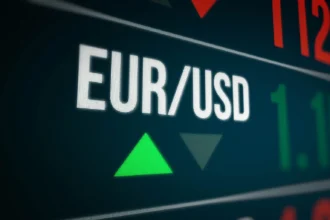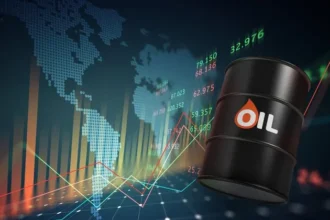Investors Rattled as Israel-Iran Conflict Escalates Oil Market Turmoil
Global investors are bracing for another week of high volatility as geopolitical tensions between Israel and Iran escalate, sending shockwaves through the oil market and amplifying risk-off sentiment across financial markets. As the situation intensifies in the Middle East, markets have entered a phase of elevated uncertainty, prompting a surge in safe-haven assets and renewed fears over inflationary pressures.
Escalation of the Israel-Iran Conflict
Over the weekend, Israel and Iran exchanged direct military strikes for the first time in years, moving the conflict from proxy wars to open confrontation. Israeli Prime Minister Benjamin Netanyahu confirmed an intensification of airstrikes, targeting Iranian nuclear infrastructure and key personnel. In retaliation, Tehran officially pulled out of nuclear negotiations with Washington—talks that had once been seen as the only viable path to regional de-escalation.
Yemen’s Iran-aligned Houthi rebels also joined the fray, further broadening the regional conflict and raising fears that key oil infrastructure could be targeted next. Reports from Iranian state media indicate that Israel bombed a gas field, marking the first strike against Iran’s energy sector in this recent conflict.
Oil Prices Surge to 6-Month Highs
Oil markets responded immediately. On Friday, Brent crude surged by 7%, closing near a six-month high. This rapid price jump reflects both the immediate concern over supply disruptions and broader fears that the Strait of Hormuz—a critical chokepoint for global oil transport—could be closed or restricted.
“The market is extremely headline-driven right now,” said Kathryn Rooney Vera, Chief Market Strategist at StoneX Group. “Any signals of escalation or retaliation trigger sharp movements, especially in commodities like oil.”
The Strait of Hormuz sees roughly 20% of global oil shipments pass through its narrow lanes. A military conflict in this region could have devastating effects on the global oil supply chain, potentially triggering an inflationary wave just as major central banks are grappling with a fragile post-pandemic recovery.
Flight to Safety: Gold and Dollar in Demand
The uncertainty surrounding the Middle East conflict has led to a predictable investor reaction: a flight to safety. On Friday, gold prices surged while the U.S. dollar regained its safe-haven status after months of being sidelined.
The equity market, in contrast, stumbled. The S&P 500 stalled after a rally that saw it gain almost 20% from its trade war-induced lows in April. Investor appetite for risk appears to be waning quickly as geopolitical concerns stack atop domestic instability in the U.S.
Protests and Political Unrest in the U.S.
The geopolitical chaos abroad coincides with a period of heightened civil unrest in the United States. Nationwide protests against President Donald Trump’s policies have intensified, organized under the “No Kings” coalition. The mood in the country worsened further following the assassination of a state lawmaker in Minnesota on Saturday, fueling anxiety and risk aversion among investors.
While these domestic events aren’t directly tied to market fundamentals, they contribute to the broader climate of uncertainty that investors dislike. Risk-sensitive assets are selling off, and market participants are shifting capital into assets traditionally viewed as more stable.
Volatility Spikes as Investors Hedge Risks
The Cboe Volatility Index (VIX), often referred to as Wall Street’s “fear gauge,” rose 2.8 points on Friday, closing at 20.82—its highest level in three weeks. Rising volatility suggests traders are preparing for more market swings and are increasingly using short-term hedging strategies.
Michael Thompson, co-portfolio manager at Little Harbor Advisors, stated that he is closely watching the near-term volatility futures curve. “If front-month contracts start trading higher than later expiries, that’s a sign the market is expecting imminent turmoil. In that case, near-term hedging becomes a must,” he said.
Inflation Fears Reignite
Oil’s surge is not only a market risk—it also poses a macro-economic dilemma. With inflation already a challenge for central banks globally, any sustained increase in energy prices could reignite consumer price pressures, complicating monetary policy decisions.
“Oil nearing $100 again could seriously worsen inflationary conditions,” warned Rooney Vera. “Especially if the Strait of Hormuz is disrupted—even for a short period.”
However, economists like Samy Chaar, Chief Economist at Lombard Odier, urge caution before jumping to conclusions. “This feels like a phase of ‘controlled confrontation.’ The oil price spike is real, but it may not translate into a persistent inflation shock. Central banks today are more focused on core fundamentals than reacting to temporary oil surges.”
Indeed, most central banks are unlikely to raise rates purely due to oil spikes unless it significantly affects core inflation or inflation expectations. For now, the emphasis remains on economic resilience, consumer demand, and labor market strength.
Stock Market Outlook: Waiting for Clarity
Despite strong earnings and improving macro indicators in recent months, the S&P 500 appears to be at an inflection point. The confluence of war risk, domestic protests, inflation concerns, and volatile commodities has cooled investor enthusiasm.
Alex Morris, Chief Investment Officer at F/m Investments, cautions against re-entering the market aggressively: “The geopolitical risk profile is too high at the moment. Until we get a clearer picture, we’re remaining underweight equities.”
Futures trading in U.S. stock indices is set to resume at 6 p.m. ET on Sunday, with investors bracing for what could be a wild open.
What Comes Next?
As the Israel-Iran conflict deepens, energy markets remain the most sensitive barometer of global tensions. If the situation escalates further—especially if oil transport routes are targeted—the consequences could be long-lasting, not just for prices but for global economic stability.
Market watchers will closely monitor statements from OPEC+, the U.S. government, and central banks for policy signals, as well as on-the-ground military developments across the Middle East.
Frequently Asked Questions (FAQs)
Q1: Why did oil prices surge recently?
Oil prices spiked due to escalating military tensions between Israel and Iran, threatening oil supply chains, especially near the Strait of Hormuz.
Q2: Will the Strait of Hormuz be closed?
There is no confirmation yet, but any military action around this area poses a significant risk to global oil transportation.
Q3: How are investors reacting to the conflict?
Investors are flocking to safe-haven assets like gold and the dollar, while stock markets and risky assets face downward pressure.
Q4: Can this lead to another inflation spike?
Yes. If oil prices stay elevated or rise further, they can feed into broader inflation, complicating central bank strategies.
Q5: What should investors do in such volatile conditions?
Diversification, cautious positioning, and hedging through volatility products or safe assets like gold are common strategies.
Disclaimer
The information provided in this article is for educational and informational purposes only and does not constitute financial or investment advice. Markets are inherently risky, and geopolitical developments can change rapidly. Always consult a qualified financial advisor before making investment decisions.



